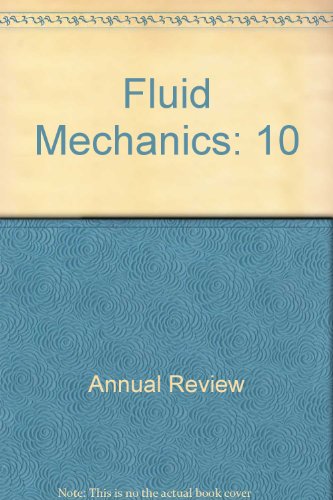Fluid Dynamics of Airtanker Firefighting
IF 30.2
1区 工程技术
Q1 MECHANICS
引用次数: 0
Abstract
Airtanker firefighting is the most spectacular tool used to fight wildland fires. However, it employs a rudimentary large-scale spraying technology operating at a high speed and a long distance from the target. This review gives an overview of the fluid dynamics processes that govern this practice, which are characterized by rich and varied physical phenomena. The liquid column penetration in the air, its large-scale fragmentation, and an intense surface atomization give shape to the rainfall produced by the airtanker and the deposition of the final product on the ground. The cloud dynamics is controlled by droplet breakup, evaporation, and wind dispersion. The process of liquid deposition onto the forest canopy is full of open questions of great interest for rainfall retention in vegetation. Of major importance, but still requiring investigation, is the role of the complex non-Newtonian viscoelastic and shear-thinning behavior of the retardant dropped to stop the fire propagation. The review describes the need for future research devoted to the subject.Expected final online publication date for the Annual Review of Fluid Mechanics, Volume 56 is January 2024. Please see http://www.annualreviews.org/page/journal/pubdates for revised estimates.空中加油机灭火的流体动力学
空中加油机灭火是用于扑灭野火的最壮观的工具。然而,它采用了一种初级的大规模喷涂技术,在高速和距离目标很远的地方操作。这篇综述概述了控制这种实践的流体动力学过程,其特点是丰富多样的物理现象。液体柱在空气中的渗透、大规模破碎和强烈的表面雾化形成了空中加油机产生的降雨和最终产品在地面上的沉积。云的动力学受液滴破碎、蒸发和风的分散控制。液体沉积到森林冠层上的过程充满了对植被的降雨保留有很大兴趣的开放性问题。最重要但仍需进一步研究的是,阻燃剂的复杂非牛顿粘弹性和剪切减薄行为对阻止火灾传播的作用。这篇综述描述了未来对这一主题进行研究的必要性。预计流体力学年度评论的最终在线出版日期,第56卷是2024年1月。修订后的估计数请参阅http://www.annualreviews.org/page/journal/pubdates。
本文章由计算机程序翻译,如有差异,请以英文原文为准。
求助全文
约1分钟内获得全文
求助全文
来源期刊
CiteScore
54.00
自引率
0.40%
发文量
43
期刊介绍:
The Annual Review of Fluid Mechanics is a longstanding publication dating back to 1969 that explores noteworthy advancements in the field of fluid mechanics. Its comprehensive coverage includes various topics such as the historical and foundational aspects of fluid mechanics, non-newtonian fluids and rheology, both incompressible and compressible fluids, plasma flow, flow stability, multi-phase flows, heat and species transport, fluid flow control, combustion, turbulence, shock waves, and explosions.
Recently, an important development has occurred for this journal. It has transitioned from a gated access model to an open access platform through Annual Reviews' innovative Subscribe to Open program. Consequently, all articles published in the current volume are now freely accessible to the public under a Creative Commons Attribution (CC BY) license.
This new approach not only ensures broader dissemination of research in fluid mechanics but also fosters a more inclusive and collaborative scientific community.

 求助内容:
求助内容: 应助结果提醒方式:
应助结果提醒方式:


